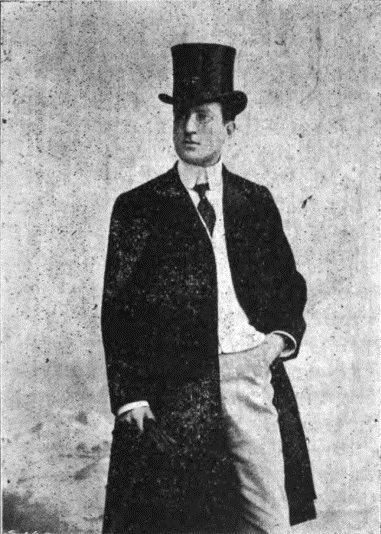Name Onnik Chifte-Saraf | Role Journalist | |
 | ||
Onnik Chifte-Saraf (Armenian Օննիկ Չիֆթե-Սարաֆ) (1874 in Constantinople, Ottoman Empire – July 11, 1932, in Geneva, Switzerland) was a renowned journalist, short story writer, and novelist.
Contents
Life
Onnik Chifte-Saraf was born Hovhannes Abisoghomian Aspet in the Istanbul suburb of Uskudar. He received his education at the Aramian school in Kadikoy, then continued at the Getronagan Armenian High School, but financial constraints forced him to quit school and work as a clerk to a merchant. His first articles appeared in the daily Surhantak (Messenger) in 1900. The following year he was invited by Arpiar Arpiarian (1852-1907) and Krikor Zohrab (1861-1915) to contribute to the Massis newspaper, where his first short stories were published. In 1902-03 he traveled through Italy, Switzerland, France, and England, acquainting himself with the literary trends of the region, and returned home with new impressions. There followed a fertile creative period. He became a regular contributor to a number of periodicals in addition to Massis such as Tsaghig (Flower), Arevelyan Mamul (Eastern Press), Shirak, Hay Kraganutyun (Armenian Literature), Byuzantium, Teotig's Amenuyn Daretyutsi (Everyone's Almanac), and others. He also served as an elected member of the Armenian National Assembly. At the start of the First World War he was drafted into the Turkish army and thus spared the horrible fate met by most of his writer colleagues during the Armenian genocide.
In 1919 he founded a weekly paper Hay Mitk (Armenian Mind), which, though it had only a brief life, reflected at length and in depth upon the aftermath of the Armenian genocide. In one article he says: "As the tattered remnants of six hundred years of slavery and suffering, what we lived through these four horrendous years was the sum total of the misery of that entire period. Now our generation, beheaded of its intellectuals, dismembered, stricken at heart, humpbacked and aged, is left like a paralyzed and stunned invalid." In the same year he was teaching in an Armenian orphanage that sheltered hundreds of children retrieved from deportation camps. He was so closely associated with these children that in 1920, when the orphanage moved to the Greek island of Corfu, he moved with them. The literature he produced the following years was strongly influenced by the psychological devastation cause by the Armenian genocide. At this time he signed his works Hovhannes Aspet.
In 1923 he was in Marseille, as principal of the local Armenian National School, and in 1928 in Geneva, as a teacher, where remained for the rest of his life.
Literary Style
Realism was the dominant trend when he started his literary career, and Krikor Zohrab was the undisputed master. "His name has a gravitational attraction," he wrote in 1901. "There is charm in the way he writes, the way he thinks, and the way he lives." Zohrab's influence on Chifte-Saraf's earlier stories is particularly strong. His own aesthetic principle, however, is that nature and life conceal such a wealth of unequaled beauties in their depths that even the strongest poetic imagination cannot rival them. There are few characters and little action in his short stories, but plenty of love, emotion, and passion. His heroes are compassionate lovers of good, beauty, and harmony, and always of a lyrical disposition. Because he was an admirer of Émile Zola, some critics also claimed to detect a trace of naturalism in his realism.
Works
Although Chifte-Saraf wrote a great number of articles, reports, travel notes, meditations, and sketches, he made his fame with short stories, of which some of the best known are Jermaknerov (Clothed in White), Metz Ayon (The Big Yes), Hokineru Prgutyun (Salvation of Souls), Pajanumi Kisheri (The Night of Separation), Speghani (Healing Ointment), Zeytuntsi Patanin (The Youth of Zeytun), and Khachelutyun (Crucifixion). His best known work is Miamiti me Argatsneri (The Adventures of a Naive Young Man, 1908), his only novel, which depicts the prodigal life of a youth who inherits considerable wealth from his Scrooge-like uncle.
